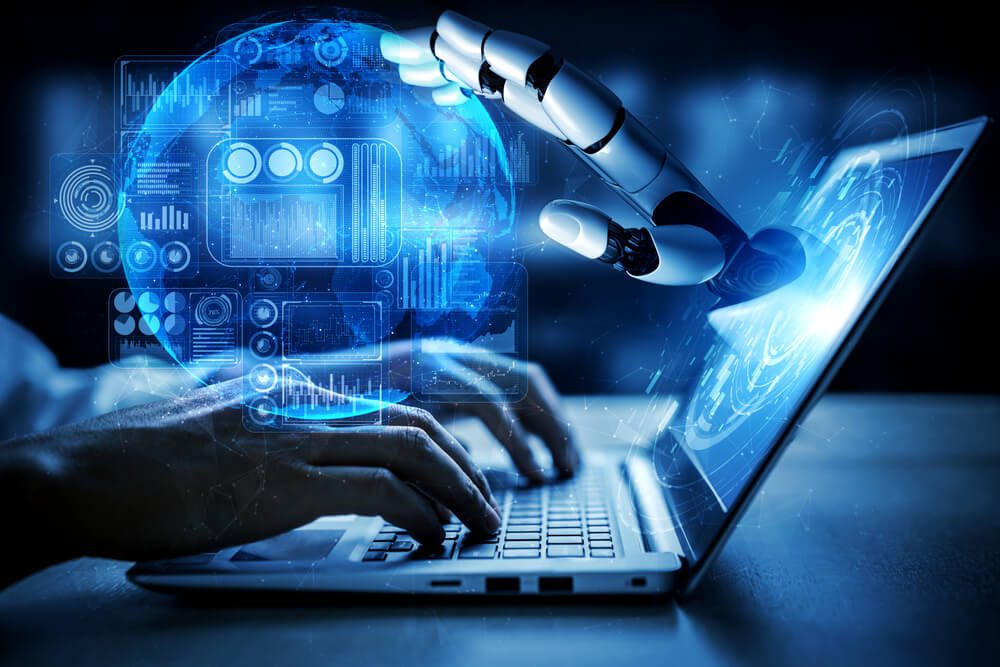
AI and Custom Digital Design: Are New Trends Good News?
Artificial intelligence (AI) — is it good or bad news for custom digital design? Now is the best time to answer this question.
This article reveals how this latest innovation influences some of the vital elements of design, including:
- Creativity
- Workflow
- Ethics
It also briefly discusses AI and how it became part of digital communication. If you are ready to learn more about this fascinating (and divisive) subject, read below! Let’s go!
Are you looking for a full-service digital marketing agency? See the DAP difference below!
What Is Artificial Intelligence?
Experts define artificial intelligence (AI) in two ways. It is a:
- Theory that describes how machines, such as computers, can develop human-like intelligence. For example, it can perceive images in the way people do. It can also recognize speech patterns or learn the language, and, most of all, make decisions.
- A study of computer systems built and trained to behave in ways that closely resemble human intelligence.
Contrary to popular belief, the history of AI is not recent. It dates back to antiquity. Some of the earliest Greek myths mentioned Talos, an automaton that protected Crete from warring invaders.
Since 380 BC, theologians, philosophers, and mathematicians had already thought about (and created) machines and mechanized systems that further fueled the idea of non-sentient beings having “human” thoughts.
As more technologies became available, converting ideas into realities became possible. During World War II, the first programmable digital computer, the ENIAC, was born.
Unlike similar machines, such as Charles Babbage’s Difference Engine, this was Turing-complete. In other words, it could calculate large numbers with a few tweaks in programming.
By the 1980s, David Rumelhart and John Hopfield had popularized deep learning, allowing computers to develop further based on experience. This further fueled AI’s growth until the release of ChatGPT in 2022. Its flexible framework and incredible speed of producing data are now changing digital marketing, including design.
How AI Influences Custom Digital Design

To be clear, AI is amoral. Whether it is good or bad depends on the user. To find out, you can evaluate its effects on bespoke web design in the areas discussed below.
1. Creativity
One of the biggest challenges in professional web design is that it is not an exact science. It greatly relies on an expert’s ability to translate even loose ideas or concepts from a client into illustrations, typographies, and layouts.
Because of this, creating a logo takes time — sometimes even a month. Back-and-forth discussions and revisions usually fill the days.
AI helps improve the creative design process by:
- Pushing the limits or boundaries of one’s imagined ideal when clients want to be unique in an already-saturated market,
- Generating inspiration when designers experience a mental block, and
- Providing high-value work since professionals might only have to fine-tune the image to commercial quality.
However, the same technology can stifle creativity and hurt the multimedia design industry.
- Business owners who need help understanding the importance of design in branding might choose not to hire professionals for the job.
- Non-designers, who usually do not have a keen eye for detail, can start taking digital design work and submit awkward-looking images without refinement.
- Some less-than-honest designers could limit themselves to the features available in the AI tools.
2. Workflow
Increasing prices and acquiring more leads are just some approaches to business growth. Productivity and efficiency can contribute to the bottom line, too. This is where AI in custom digital design becomes essential.
With it you can:
- Generate multiple designs based on preferences without compromising brand integrity,
- Automate specific design tasks, such as selecting color palettes or suggesting typography,
- Enhance existing designs,
- Build custom logos,
- Optimize the design process through machine learning algorithms.
AI analytics tools can also collect user data, especially those that pertain to customer needs, preferences, and behaviors. Digital design agencies can then use the information to provide more personalized, immersive experiences.
AI workflow tools can have a great influence on business performance. They can:
- Increase user engagement,
- Improve conversion optimization, making it easier to push leads deeper into the sales funnel,
- Enhance customer retention rate because of good user experience,
- Allow companies to scale by creating visual assets they need fast,
- Boost employee morale because they can now focus on other essential activities.
On the downside, excessive use of AI in every design process can lead to impersonal interactions. The work loses its “magical” touch — the ability to stir emotions, connect with the audience, and build a memorable brand.
3. Ethics
One cannot discuss arts and design without covering ethics, and this is a contentious point where AI is concerned, although the actual legalities are already well beyond the scope of this article.
The problem begins with the way AI works nowadays. As mentioned, it develops through learning from experiences and exposure. Online, it begins to “know” through the information its creators feed it—in short, already published content.
This constitutes stealing or copyright infringement for many digital designers and artists, particularly since the technology learns without the sources’ permission. It does not help that Stable Diffusion, an AI art generator, created an image still bearing Getty’s watermark.
Many AI developers defend their work, saying their products run on specific algorithms. They do not have any control over the output or what the machine learns online.
Many countries are unsure how the technology works. Drafting regulations over its use is difficult. Still, the concern about ethics makes using purely AI for digital design risky for businesses. They open themselves to potential lawsuits or negative publicity. Both can hurt the bottom line that brand owners have worked hard to build.
Summing Up
Is AI good or bad news for digital design? The answer lies in us as humans. As with any other tool, it makes life easy. From an online marketing and business perspective, it automates repetitive tasks. It prevents brain fatigue by giving us ideas and insights to create unique, brand-centric work.
It can also be prone to abuse. People can rely on it too much, stifling their creativity and imagination. It makes systems efficient but also takes away a more personal connection with the audience. Most of all, the wrong use of AI can cross ethical boundaries and even federal laws.
To get quality custom digital design nowadays, find a digital marketing agency that combines the human touch with technology. Digital Authority Partners (DAP) knows the value of both. Contact us to learn how we do it.
Want To Meet Our Expert Team?
Book a meeting directly here




